Discover the Truth: Is Viscose Stretchy? 2024 Expert Advice
Viscose is a type of fabric that is known for its stretchy nature. This characteristic makes it a popular choice for clothing items that need to have a bit of giving, such as leggings or tops with a fitted silhouette.
The stretchiness of viscose comes from the fact that it is made from plant-based fibers, which are naturally more flexible than synthetic materials like polyester or nylon.
This allows the fabric to move and adapt to the wearer’s body, providing a comfortable and flattering fit.
As I mentioned above is viscose stretchy so it is important to know you one of the key characteristics of viscose is its ability to stretch, which makes it a comfortable and flexible fabric to wear.
Viscose is known for its breathability and absorbency, which makes it ideal for use in warm, humid climates. It is also easy to care for, as it can be machine washed and dried.
So, keeping in mind all of your needs here I come up with a detailed guide about it.
What Is Viscose?
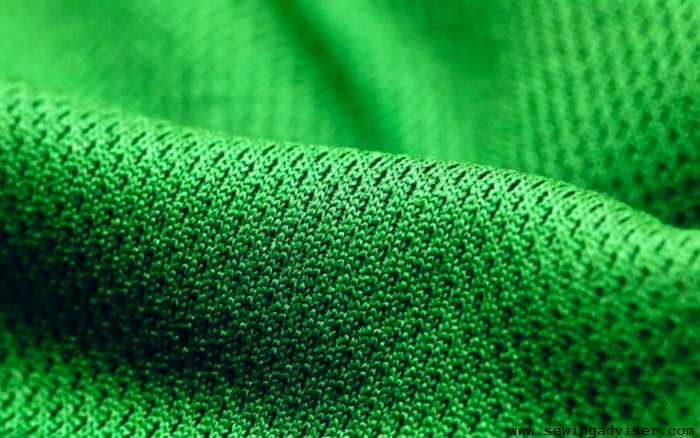
Viscose is a type of fabric made from plant-based materials, typically wood pulp. It is a semi-synthetic fabric, meaning that it is made from natural materials that have been chemically processed.
The result is a fabric that is soft and silky to the touch, with a drape and luster that is similar to natural fibers like silk or cotton.
Viscose is also known for its absorbency, which makes it a popular choice for clothing items that need to be breathable and moisture-wicking, such as sports tops or dresses.
Because it is made from plant-based materials, viscose is often considered a more sustainable option than fully synthetic fabrics like polyester or nylon.
How is Viscose Made?
Viscose is a type of rayon, which is a man-made fiber made from wood pulp. To make viscose, wood pulp is treated with chemicals to turn it into a solution called viscose, which is then extruded through tiny holes to create long threads of fiber.
These threads are then treated with more chemicals to give them the desired properties, such as softness and strength. The resulting fibers are then spun into yarn and woven or knitted into fabrics.
Is Viscose Stretchy?
Yes, viscose is a stretchy fabric. However, it is important to note that it is not as stretchy as some other fabrics on the market.
That being said, it still has a good amount of give to it, which makes it a good choice for many different garments.
One thing to keep in mind when working with viscose is that it can shrink. That is why it is important to pre-wash the fabric before you start working with it. This will help to ensure that your finished garment fits the way that you want it to.
If you are looking for a fabric that is going to have a little bit of stretch to it, then viscose is a good option.
It is important to keep in mind, though, that it is not as stretchy as some other fabrics. That being said, it is still a good choice for many different garments.
Why is Viscose Material a Good Choice?
There are a few reasons why viscose is a good choice for fabric.
- It is very strong.
- It is very stretchy.
- It is resistant to both chlorine and UV light.
What Are the Characteristics of Viscose?
Viscose is a synthetic fiber made from cellulose, which is derived from wood pulp. It has a number of characteristics that make it popular for use in a wide range of products, including clothing, bedding, and upholstery.
Some of the main characteristics of viscose include:
- Soft and smooth texture: Viscose has a soft, smooth texture that is similar to silk or cotton. It is often used to make clothing and other textiles that have a luxurious feel.
- High absorbency: Viscose has a high absorbency rate, which means it can easily absorb moisture from the air. This makes it a good choice for clothing and other products that need to be breathable.
- Drapes well: Viscose has a good drape, which means it falls in a natural, flowing way when it is worn. This makes it a popular choice for garments like dresses and skirts.
- Wrinkles easily: Viscose is prone to wrinkling, especially when it is wet. It may need to be ironed or steamed to maintain a smooth appearance.
- Low durability: Viscose is not as durable as some other fibers, and it may stretch or become damaged more easily over time. It is also prone to shrinking when it is washed.
- Affordable: Viscose is generally less expensive to produce than other fibers, which makes it an affordable option for many consumers.
Types of Viscose Fabric Blends That Are Stretchy
Viscose is a type of rayon, which is a synthetic fabric made from cellulose fibers. It has a smooth, soft, and silky texture, and is often used to make clothing, bedding, and other textiles.
Viscose is known for its drape and moisture-wicking properties, but it can also be blended with other fibers to create different characteristics and properties. Here are some types of viscose fabric blends that are stretchy:
- Viscose spandex: This blend combines viscose with spandex, which is a synthetic fiber known for its high stretchability. The resulting fabric has a smooth, stretchy, and comfortable feel, making it ideal for athletic wear and other garments that require a lot of movement.
- Viscose elastane: This blend combines viscose with elastane, which is another type of synthetic fiber with high stretchability. Like viscose spandex, viscose elastane fabric has a smooth, stretchy, and comfortable feel, and is often used in athletic wear and other stretchy garments.
- Viscose nylon: This blend combines viscose with nylon, a synthetic fiber known for its strength and durability. The resulting fabric has a stretchy feel, but it is also strong and durable, making it suitable for a variety of garments, including activewear and swimwear.
- Viscose polyester: This blend combines viscose with polyester, a synthetic fiber known for its wrinkle resistance and durability. The resulting fabric has a stretchy feel and is easy to care for, making it suitable for a wide range of garments, including dresses, skirts, and tops.
It’s worth noting that viscose fabrics are generally not as stretchy as natural elastic fibers such as wool or cotton, so they may not be suitable for all stretchy garment applications.
However, when blended with other fibers that provide stretch, viscose fabrics can be a comfortable and stylish choice.
Is 100% Viscose Stretchy?
Viscose is not inherently stretchy, but it can be made stretchy by adding elastane or other stretchy fibers to the viscose yarn.
When viscose is blended with elastane or other stretchy fibers, it can be very stretchy, depending on the amount of elastane or other stretchy fibers that are added. However, pure viscose without any added stretchy fibers is not stretchy.
How Much Does Viscose Stretch?
Viscose is a type of fabric that is known for its soft, smooth texture and drape. It is made from plant-based materials, such as wood pulp or bamboo, and is often used in the production of clothing and other textiles.
Viscose fabric is known for its versatility, as it can be made into a variety of different styles and can be used in many different types of clothing.
Does Viscose Stretch When Washed?
Viscose, also known as rayon, is a synthetic fabric that is made from plant-based materials. It is known for its soft, smooth texture and drape, as well as its absorbency and breathability. Viscose is often used to make clothing and other textiles, such as bed sheets and towels.
When it comes to stretch, viscose can be somewhat variable. Some viscose fabrics may stretch slightly when washed, while others may not stretch at all.
The amount of stretch that a viscose fabric experiences when washed can depend on a number of factors, including the type of viscose used, the weight of the fabric, and the construction of the garment.
In general, however, viscose fabrics are not known for their stretchiness. They are more likely to maintain their shape and size after washing, although some shrinkage may occur.
It is always a good idea to check the care instructions on the garment to see if the manufacturer has any specific recommendations for washing and drying viscose fabrics.
Overall, it is safe to say that viscose fabrics do not typically stretch when washed. They may maintain their shape and size, or they may shrink slightly, but they are not known for their stretchiness.
Does Viscose Stretch With Wear?
It is not uncommon for viscose fabric to stretch with wear, especially if it is a loose-fitting garment.
This is because viscose is a flexible and soft material, and it is made from natural fibers that can stretch and move with the body.
However, the amount of stretching that occurs will depend on the individual garment and how it is worn and cared for.
It is important to read the care instructions on the garment label to ensure that it is washed and handled in a way that will minimize stretching and maintain its shape.
Additionally, it is generally recommended to avoid stretching viscose fabric too much, as it can cause the garment to lose its shape and become misshapen over time.
Does Viscose Stretch When Worn?
Viscose fabric can stretch slightly when worn, but not to the same extent as fabrics like cotton or spandex.
This is because viscose is a type of rayon, which is a semi-synthetic fabric that is made from cellulose that has been treated with chemicals to give it certain properties.
When viscose is worn, it may stretch slightly due to the weight of the fabric and the movements of the body.
However, it will not stretch as much as other fabrics because it does not have the same amount of elasticity.
This means that clothing made from viscose may fit snugly when it is first put on, but it may become looser as the day goes on.
It is important to keep this in mind when purchasing clothing made from viscose, as it may not provide the same level of support and shape as other fabrics.
Overall, viscose is a soft, comfortable fabric that can be used to make a wide range of clothing and other items. While it does have some stretch, it is not as stretchy as other fabrics, so it is important to consider this when choosing clothing made from viscose.
Does Ironing Stretch Viscose?
Well, the good news is that ironing viscose fabric should not cause it to stretch. In fact, ironing can actually help to smooth out wrinkles and give the fabric a more polished, finished look.
When ironing viscose, it is important to use a low heat setting to avoid damaging the fabric.
It is also a good idea to use a pressing cloth, such as a piece of muslin or cotton fabric, between the iron and the viscose to protect the fabric from direct heat.
Additionally, you should avoid using steam when ironing viscose, as this can cause the fabric to become damp and shrink.
Overall, ironing viscose fabric can help to improve its appearance and remove wrinkles, without causing it to stretch.
Can You Stretch Viscose?
Yes, viscose fabric can be stretched. However, it is important to note that viscose is a delicate fabric and should be handled with care.
It is best to stretch viscose gently and slowly, rather than pulling or tugging on it forcefully.
If you need to stretch viscose, you can try the following methods:
- Wet the fabric: Wet the viscose fabric with lukewarm water, then gently stretch it to the desired shape and size. Allow it to air dry completely before wearing or using it.
- Use steam: Hold the viscose fabric over a pot of boiling water or a steam iron and allow the steam to penetrate the fabric. Gently stretch the fabric to the desired shape and size, then allow it to cool and dry completely.
- Wear it: You can also try stretching viscose fabric by wearing it. For example, if you have a pair of viscose pants that are too tight, you can try wearing them and moving around in them to stretch them out.
It is important to be gentle and careful when stretching viscose, as it is a delicate fabric that can be easily damaged if handled roughly.
If you are unsure about how to stretch viscose, it is best to consult a professional or refer to the care instructions provided with the garment.
How to Stretch Viscose: 3 Best Methods
Viscose is a type of fabric that is made from cellulose, which is derived from wood pulp. It has a soft, silky feel and is often used in the production of clothing and other textiles.
Viscose is prone to shrinking when it is washed, so it is important to take care when caring for it.
Using Water
To stretch viscose fabric that has shrunk, you can try the following method:
- Fill a sink or basin with lukewarm water and add a small amount of mild detergent.
- Place the viscose fabric in the water and gently agitate it to help loosen any dirt or stains.
- Soak the fabric for about 15-20 minutes, or until it is fully saturated.
- Remove the fabric from the water and gently squeeze out any excess water. Do not wring or twist the fabric, as this can cause it to shrink further.
- Lay the fabric out on a clean, flat surface and smooth it out with your hands.
- Using your hands or a rolling pin, gently stretch the fabric in all directions until it reaches the desired size. Be careful not to stretch it too much, as this can cause the fabric to become distorted or misshapen.
- Allow the fabric to air dry completely. Do not hang it up to dry, as the weight of the water may cause it to stretch further.
Using Shampoo or Conditioner
One of the great things about viscose is that it is very easy to stretch. In fact, you can use shampoo or conditioner to help stretch your fabric. Follow this step-by-step guide to stretch viscose:
- Wet your fabric with warm water.
- Apply a generous amount of shampoo or conditioner to the fabric.
- Massage the fabric with your hands for a few minutes.
- Rinse the fabric with warm water.
- Stretch the fabric by pulling it gently with your hands.
- Hang the fabric to dry.
Using Steamer or Iron
Stretching Viscose Fabric with a Steamer or Iron: Step-by-Step Guide
- Set up your steamer or ironing station in a well-ventilated area with enough space to maneuver the fabric.
- Fill the steamer with water and wait for it to heat up. If using an iron, ensure it is set to the appropriate heat setting for viscose (typically low to medium heat).
- Lay the viscose fabric flat on a clean, flat surface, such as an ironing board or table.
- Gently mist the fabric with water using the steamer, ensuring it is evenly damp but not soaked. If using an iron, lightly dampen the fabric using a spray bottle filled with water.
- Start stretching the fabric gradually and evenly by pulling it in all directions. Avoid applying excessive force, as viscose can easily tear.
- Apply steam to the fabric using the steamer or hover the iron over the fabric without making direct contact. The steam will help relax the fibers and make the stretching process easier.
- Continue stretching and steaming the fabric, focusing on areas that need more elongation. Pay attention to any specific areas that may require extra stretching, such as sleeves or waistbands.
- If using an iron, you can lightly press the fabric using the iron’s steam function. Remember not to apply too much pressure, as this can damage the fabric.
- Repeat the stretching and steaming process until you achieve the desired level of stretch. Be patient and take your time to avoid overstretching the fabric.
- Once you’re satisfied with the stretched fabric, allow it to air dry completely before handling or wearing it. Avoid using a clothesline or clothespins, as they may leave marks or indentations.
- Optionally, after drying, you can iron the fabric on a low heat setting to smooth out any wrinkles or creases that may have formed during the stretching process.
By following these tips, you can stretch viscose with a steamer or iron.
How To Stretch Viscose Shirt
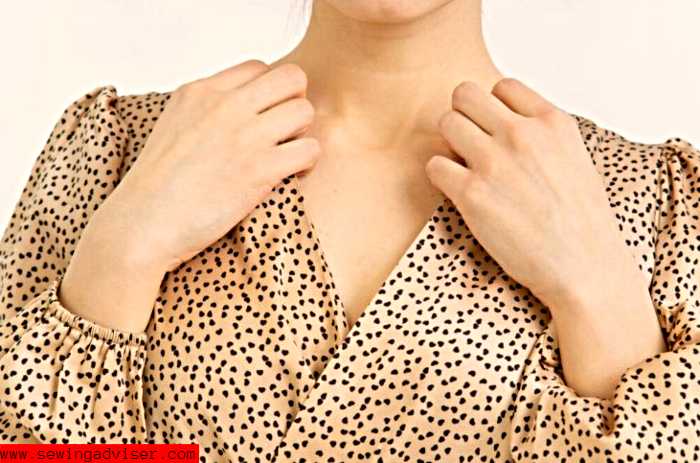
Viscose is a type of fabric that is known for its soft, smooth texture and its ability to drape well. It is often used to make shirts and other clothing items.
To stretch a viscose shirt, you can try the following steps:
- Wet the shirt. Wetting the shirt will make it more pliable and easier to stretch. You can wet the shirt with a spray bottle or by running it under a faucet. Be sure to wet the areas of the shirt that you want to stretch.
- Put on the shirt. Once the shirt is wet, put it on and wear it until it dries. This will help the fabric to stretch to fit your body.
- Use heat to stretch the shirt. After the shirt has dried, you can use heat to help it stretch further. You can use a hair dryer or steamer to apply heat to the areas of the shirt that you want to stretch. Be careful not to apply too much heat, as this can damage the fabric.
- Repeat the process as needed. If the shirt still doesn’t fit well after trying these steps, you can repeat the process until you are satisfied with the fit.
Remember to be gentle when stretching a viscose shirt, as the fabric is delicate and can easily be damaged.
Related Post: How To Wash Cotton Fabric Before Sewing
How To Stretch Viscose Dress
To stretch a viscose dress, you can try the following steps:
- Fill a spray bottle with lukewarm water and mist the dress lightly, being careful not to soak it.
- Put on the dress and use a hair dryer in the cool setting to blow dry the damp areas. This will help to stretch the fabric gently.
- As you blow dry, use your hands to carefully stretch the fabric in the areas that are too tight.
- Once the dress is dry, try it on again to see if it fits better. If it still feels too tight, repeat the process until you achieve the desired fit.
Remember to be gentle and not overstretch the fabric, as this can cause it to lose its shape or even tear.
Also, be sure to read the care instructions on the dress to ensure that you are not damaging it by using the spray bottle or hair dryer.
Is Viscose Stretchy: Pros and Cons
Is Viscose More Stretchy Than Polyester?
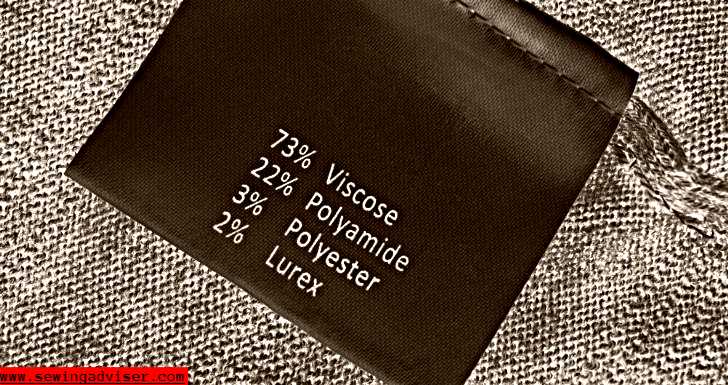
No, Viscose is generally less stretchy than polyester. Viscose is a type of fiber made from wood pulp, and it has a soft, smooth feel and a drape that is similar to natural fibers like silk or rayon.
It can be stretched slightly, but it does not have as much elasticity as polyester or other synthetic fibers.
Polyester, on the other hand, is a synthetic fiber that is made from petroleum-based chemicals. It is known for its strength, durability, and elasticity, and it is often used in stretchy or stretch-resistant fabrics.
However, the stretchiness of fabric can also depend on other factors such as the type of weave or knit used and the amount of elastane or spandex added to the fiber blend.
Is Viscose More Stretchy With Nylon?
Viscose is a type of synthetic fiber made from wood pulp and is not inherently stretchy. However, it can be blended with other fibers, such as nylon, to give it stretch properties.
Viscose blended with nylon may be more stretchy than viscose by itself, depending on the specific blend and how it is woven or knitted.
It is also possible to add stretch to viscose fabric through the use of elastane or spandex. In general, viscose fabrics have a soft, smooth feel and drape well, but may not have as much stretch as fabrics made from purely synthetic fibers like nylon or spandex.
Is Viscose And Elastane Stretchy?
Well, Viscose is a type of rayon, which is a synthetic fiber made from cellulose. Viscose has a similar feel and drape to natural fibers like cotton or silk, but it is not as stretchy as natural fibers or synthetic fibers like elastane or spandex.
Elastane, also known as spandex or Lycra, is a synthetic fiber known for its stretchiness and ability to recover its shape after stretching. It is often used to make stretchy clothing, such as leggings, swimsuits, and athletic wear.
When viscose is blended with elastane, the resulting fabric will have some stretch to it, but it will not be as stretchy as a fabric made entirely of elastane. The amount of stretch in the fabric will depend on the percentage of elastane in the blend.
Are Polyester And Viscose Stretchy?
Both polyester and viscose are synthetic fabrics that are often used to make stretchy clothing. Polyester is a synthetic polymer that is made from petroleum-based chemicals, and it is known for its strength, durability, and wrinkle-resistant properties.
It is also stretchy, but the amount of stretch can vary depending on the specific type of polyester fabric and how it is woven or knitted. Some polyester fabrics, such as spandex or elastane, have a high degree of stretch and are often used to make stretchy clothing.
Viscose, also known as rayon, is a synthetic fiber that is made from wood pulp and is known for its soft, silky feel. It is often used to make clothing that has a drapey, flowy appearance.
Viscose is also stretchy, but again, the amount of stretch can vary depending on the specific type of viscose fabric and how it is woven or knitted. Some viscose fabrics have a higher degree of stretch than others. In general, viscose is not as stretchy as spandex or elastane, but it can still have a moderate amount of stretch.
Is Cotton Viscose Stretchy?
Cotton and viscose are both types of fabric, and each has its own characteristics. In general, cotton is a flexible and stretchy fabric, while viscose is a smooth and soft fabric.
The stretchiness of a cotton viscose fabric will depend on how it is made and the proportions of cotton and viscose in the fabric.
If the fabric is made with a high proportion of cotton and is woven in a way that allows for flexibility, it may be stretchy. However, if the fabric is made with a higher proportion of viscose or is not woven in a flexible way, it may not be very stretchy.
It is best to check the product specifications or contact the manufacturer to determine the stretchiness of a specific cotton viscose fabric.
Is Woven Viscose Stretchy?
Woven viscose is not typically stretchy. Viscose is a type of fabric that is made from processed plant fibers, such as wood or bamboo. When these fibers are woven together, they create a fabric that is soft, smooth, and silky to the touch.
However, because the fibers are not stretched or twisted during the weaving process, the resulting fabric is not stretchy.
Is Bamboo Viscose Stretchy?
Bamboo viscose is a type of fabric that is made from bamboo fibers. It is not inherently stretchy, but it can be made into stretchy fabrics by adding certain materials or using certain manufacturing techniques.
The stretchiness of bamboo viscose fabric will depend on how it is made and what it is blended with. In general, though, bamboo viscose is not known for being particularly stretchy.
Is Viscose Stretchy in Jeans?
Viscose is a type of fabric that is known for its soft, smooth feel and its ability to drape well. It is often used in clothing items like dresses, blouses, and scarves because of these properties.
In general, viscose is not known for its stretchiness. However, viscose can be blended with other fabrics like spandex or lycra to create a stretchier fabric.
So, it’s possible that some jeans made with viscose could be stretchy, but it would depend on the specific fabric and construction of the jeans.
Is Polyester Viscose Stretchy?
Yes, polyester viscose is stretchy. Viscose is a type of cellulose fiber, which is derived from plant material and is known for its soft, silky texture and good drape.
When combined with polyester, a synthetic fiber known for its durability and elasticity, the resulting fabric is stretchy and comfortable to wear.
Is Viscose and Linen Stretchy?
Viscose and linen are not typically stretchy fabrics. Viscose is a synthetic fabric that is made from plant-based materials and has a soft, smooth texture.
It is known for its drape and absorbency, but it does not have a lot of stretches. Linen, on the other hand, is a natural fabric made from the fibers of the flax plant.
It is known for its cool, breathable qualities and its durability, but it also does not have a lot of stretches.
Does 95% Polyester And 5% Spandex Have A Lot Of Stretch?
A fabric that is 95% polyester and 5% spandex is likely to have some stretch to it, but the amount of stretch will depend on the specific construction of the fabric and how it is made.
In general, polyester is a synthetic fiber that is known for its strength and durability, but it does not have a lot of stretch on its own. The addition of spandex, a synthetic fiber that is known for its high stretch and elasticity, can help to add some stretch to the fabric.
However, the amount of stretch will depend on the proportion of spandex to polyester in the fabric and how it is constructed.
If you are looking for a fabric with a lot of stretch, you may want to consider a fabric that has a higher proportion of spandex or one that is made specifically for stretch, such as stretch denim or stretch jersey.
Is Ecovero Viscose Stretchy?
Ecovero viscose is a type of viscose fabric that is made from plant-based fibers that are derived from sustainable wood sources. It is similar to regular viscose in terms of its soft, silky feel and drape, as well as its ability to absorb moisture.
As with regular viscose, the stretchiness of Ecovero viscose will depend on the way it is made and the blend of fibers used.
Some Ecovero viscose fabrics may have a good amount of stretch and be suitable for use in clothing that requires a bit of giving, while others may have less stretch and be more suitable for use in structured garments.
In general, Ecovero viscose can be considered stretchy, but its level of stretch will vary depending on the specific fabric.
Is Viscose Stretchy or Tight?
Viscose is a fabric that is often used in garments that are meant to be form-fitting. This is because viscose has a lot of stretch to it.
However, this stretchiness also means that viscose can feel tight when it is first put on. The good news is that viscose will usually loosen up after a few minutes of wear.
So, if you find a garment made of viscose to be too tight, don’t give up on it just yet!
Is Viscose Breathable?
Yes, viscose is generally considered to be breathable. Viscose is a semi-synthetic fiber made from wood pulp or plant cellulose. It has properties similar to natural fibers such as cotton and linen, which are known for their breathability.
Viscose fabric allows air to circulate, which helps to regulate body temperature and prevent overheating. It can be a suitable choice for garments in warmer weather or for people who prefer breathable fabrics.
However, it’s important to note that the breathability of viscose can vary depending on the specific weave, thickness, and finishing processes used in fabric production.
Does Viscose Stretch as You Wear it?
Yes, the viscose does stretch as you wear it. This is because viscose is a natural polymer and it responds to changes in temperature and humidity.
When it is warm and humid, viscose will absorb moisture from the air and expand. When it is cool and dry, viscose will contract and shrink. This means that viscose clothing can be quite difficult to care for, as it is prone to wrinkling and stretching.
If you are interested in wearing viscose clothing, it is important to be aware of how it will react to different types of weather and body types.
Viscose is a great choice for people who are looking for a fabric that is soft and drapes well, but it may not be the best choice for people who are looking for a fabric that is easy to care for.
Is Viscose Similar to Cotton?
Viscose and cotton are different materials, but they have some similarities. Both are natural fibers and are used in textile production.
However, viscose is made from cellulose derived from wood pulp, while cotton is derived from the cotton plant.
Is Viscose Material Body Hugging?
Yes, Viscose is a body-hugging material that is often used in form-fitting clothing. It is also used in many types of lingerie.
Viscose is known for its softness, drapability, and absorbency. It is often used in summer clothing because it is a light and airy fabric.
Why is Viscose Good for Stretchy Clothing?
There are a few reasons why viscose is such a good choice for stretchy clothing.
First of all, it is a very lightweight fabric, which means it is comfortable to wear. It is also breathable and absorbent, making it ideal for summer clothing.
Another reason viscose is a good choice for stretchy clothing is that it has a high degree of stretchability. This means that it can be stretched a lot without breaking or losing its shape. This is ideal for clothing that needs to be stretchy, such as leggings or yoga pants.
Finally, viscose is a very affordable fabric, which makes it a great choice for budget-conscious shoppers.
So if you are looking for a fabric that is both stretchy and comfortable, viscose is definitely the way to go.
How To Choose The Best Viscose Fabric?
When it comes to choosing the best fabric for your next project, there are a lot of options to choose from. But if you’re looking for a fabric that is both soft and drapey, then viscose is a great option.
Viscose is a plant-based fabric that is made from cellulose fibers. It is often compared to silk because of its similar appearance and feel. However, viscose is much more affordable than silk and it is also easier to care for.
One thing to keep in mind when choosing a viscose fabric is that it is not as stretchy as some other fabrics. So if you’re looking for a fabric that has a lot of give, then viscose may not be the best option.
Another thing to consider is that viscose fabrics can shrink when they are washed. So be sure to read the care instructions carefully before you wash your fabric.
Overall, viscose is a great option for a fabric that is both soft and drapey. Just be sure to keep in mind that it is not as stretchy as some other fabrics and it can shrink when it is washed.
Does 100% Viscose Wrinkle?
Viscose is a fabric made from plant fibers, usually cellulose. It’s often used in clothing and other textile products because it’s soft and has a lustrous quality similar to silk.
It’s also relatively easy to care for. However, one downside of viscose is that it’s prone to wrinkling.
If you’re wondering whether 100% viscose fabric will wrinkle, the answer is yes. Viscose is a plant-based fabric, so it’s not as strong as synthetic fabrics like polyester.
This means that it’s more susceptible to wrinkling, especially when it’s exposed to humidity.
There are a few things you can do to reduce wrinkles.
First, choose a viscose fabric with a tight weave. This will help the fabric resist wrinkles.
Second, avoid storing viscose fabric in humid environments. If you must store it in a humid environment, consider using a garment bag or plastic container with a tight seal.
Third, avoid exposing viscose fabric to direct sunlight. Sunlight can cause the fabric to fade and become brittle, which makes it more likely to wrinkle.
Finally, if you do get wrinkles in your viscose fabric, you can try steaming or ironing them out.
Can you Iron Viscose?
Ironing viscose is possible, but there are a few things you need to keep in mind.
- First, viscose is a delicate fabric, so you’ll need to use a lower heat setting on your iron.
- You should also use a press cloth to protect the fabric from the direct heat of the iron.
- Finally, be sure to test the iron on a small area of the fabric before moving on to the rest of the garment.
With these tips in mind, you can iron your viscose garments with confidence.
Is Viscose More Expensive than Cotton?
It really depends on a few factors, such as the quality of the fabric and where you purchase it from. In general, viscose is going to be more expensive than cotton.
The main reason for this is that viscose is a man-made fabric, while cotton is a natural fabric. Viscose is made from wood pulp, which is a renewable resource.
However, the process of turning wood pulp into fabric is very energy intensive. Cotton, on the other hand, is a plant that can be grown relatively easily.
Another factor that affects the price of viscose is the quality of the fabric. Viscose can be made from lower-quality wood pulp, which makes it less expensive.
However, the best quality viscose is made from high-quality wood pulp and is often more expensive than cotton.
Does Viscose Smell when you Sweat?
Yes, viscose smell when you sweat because sweat is made up of water and salt, which can break down the cellulose fibers in viscose.
This can cause the fabric to release an unpleasant odor. Viscose is also more likely to absorb sweat and other body fluids than other fabrics, which can make the smell more pronounced.
If you’re worried about your clothes smelling bad, there are a few things you can do to prevent it.
First, choose viscose fabrics that are treated with an anti-bacterial finish. This will help to prevent the growth of bacteria, which can cause odors.
You can also use a fabric refresher spray on your clothes before you wear them. This will help to mask any odors that might be present.
Finally, be sure to wash your clothes regularly. This will help to remove any sweat or body fluids that may be trapped in the fabric.
Is Viscose good for Summer?
Absolutely, viscose is a fantastic choice for staying cool during those scorching summer months! This fabric is wonderfully breathable and lightweight, which means it lets your skin breathe and helps you stay comfortable when the sun is shining its brightest.
Viscose is known for its moisture-absorbing properties, which are like a refreshing breeze on a hot day. It drapes beautifully and has a silky smooth feel, making it perfect for flowy, easy-breezy summer outfits that help you beat the heat in style.
Just remember to check the care instructions for your specific viscose garment, as some may require a bit of extra TLC when it comes to washing and handling.
So, go ahead and embrace the summer vibes with some lovely viscose pieces in your wardrobe you’ll be glad you did!
Viscose Vs Polyester
Viscose and polyester are both synthetic fabrics, but they have some differences in terms of their properties and uses.
Viscose is a type of rayon, which is a cellulosic fiber made from wood pulp. It is soft, and smooth, and has a drape similar to natural fibers like silk and wool.
Viscose is often used in the production of clothing, bedding, and other household textiles. It is also used to make paper and other products.
Polyester is a synthetic polymer made from petroleum-based chemicals. It is strong, durable, and resistant to wrinkling and shrinking.
Polyester is often used in the production of clothing, upholstery, and other household textiles. It is also used to make industrial products like ropes, cords, and automotive parts.
In general, viscose has a softer, more natural feel and drape than polyester. Polyester, on the other hand, is more durable and easier to care for than viscose.
Related Article: How To Get Stains Out Of Polyester
Viscose Vs Modal Fabric
Viscose and modal are both types of cellulose fibers that are made from natural, renewable raw materials. Both fabrics are soft and smooth, and have a similar drape and feel.
However, there are a few key differences between the two:
- Raw material: Viscose is made from wood pulp, while modal is made from beech wood pulp.
- Production process: The production process for viscose is more complex and involves the use of chemicals, while the production process for modal is more eco-friendly and involves fewer chemicals.
- Durability: Modal is generally more durable than viscose, as it is stronger and less prone to shrinking and wrinkling.
- Absorbency: Modal is more absorbent than viscose, making it a good choice for use in towels and other items that may come into contact with moisture.
- Cost: Modal is generally more expensive than viscose, as it is more expensive to produce.
In summary, both viscose and modal are soft, smooth fabrics that are made from natural materials. However, modal is generally more durable and absorbent than viscose, and it is also more expensive to produce.
Tips on How to Care for Viscose Clothing
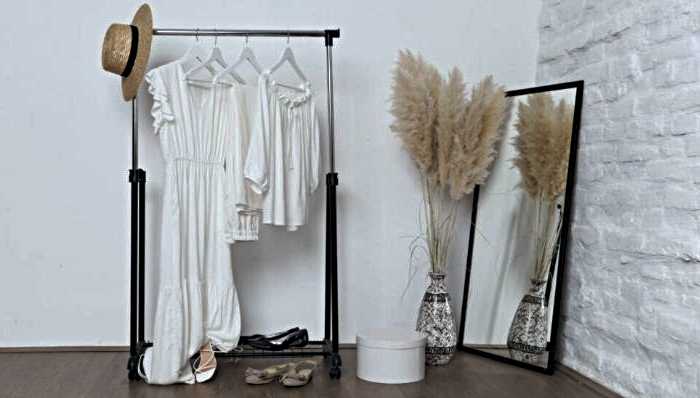
Viscose is a type of fabric that is made from plant fibers, such as wood pulp or bamboo. It is often used to make clothing that is soft, lightweight, and comfortable to wear.
Here are some tips for caring for viscose clothing:
- Wash viscose clothing on a gentle cycle using cold water. Hot water can cause the fabric to shrink or become distorted.
- Use a mild detergent and avoid using bleach or fabric softener, as these can damage the fabric.
- Dry viscose clothing on a low heat setting or hang it up to air dry. Avoid exposing it to direct sunlight, as this can cause fading.
- Avoid wringing or twisting viscose clothing when it is wet, as this can cause the fabric to stretch or become distorted.
- If you need to iron viscose clothing, use a low heat setting and press it gently. Avoid ironing over any embellishments or prints, as this can cause them to become distorted.
- Store viscose clothing in a cool, dry place, away from direct sunlight. Avoid hanging it in a damp or humid location, as this can cause the fabric to become wrinkled or stretched.
By following these tips, you can help keep your viscose clothing looking its best and lasting longer.
Conclusion: Is Viscose Stretchy
I hope that now you are well aware of about is viscose stretchy or not. In Conclusion, viscose is a type of fabric that is made from plant-based fibers, typically derived from wood pulp.
It is known for its soft, silky feel and drape, as well as its ability to absorb moisture and sweat. When it comes to stretch, viscose can be somewhat stretchy, depending on the way it is made and the blend of fibers used.
Some viscose fabrics have a good amount of stretch and are suitable for use in clothing that requires a bit of giving, such as leggings or yoga pants.
Other viscose fabrics may have less stretch and be more suitable for use in structured garments, such as dresses or blouses. In general, viscose can be considered stretchy, but its level of stretch will depend on the specific fabric.
Some FAQs: Is Viscose Stretchy
How does Viscose Fabric feel against the Skin?
Viscose fabric has a soft and smooth texture, often compared to silk or cotton. It is comfortable to wear and has a breathable quality, making it suitable for various types of clothing.
Is Viscose Fabric Prone to Shrinking?
Yes, viscose fabric can shrink if not properly cared for. It is important to follow the manufacturer’s care instructions, which typically recommend gentle washing and avoiding high heat when drying.
Does Viscose Wrinkle Easily?
Viscose fabric has a tendency to wrinkle, especially when it is not blended with other fibers. To minimize wrinkles, it is recommended to hang or steam garments made of viscose rather than folding them.
Is Viscose Environmentally Friendly?
Viscose is derived from wood pulp, making it a semi-synthetic fabric. The environmental impact of viscose production varies depending on the manufacturing processes used.
Some production methods can be harmful to the environment, while others incorporate sustainable practices. Look for certifications like FSC or EcoVero to identify more eco-friendly viscose options.
Can Viscose be Machine Washed?
Viscose fabric is typically safe for machine washing, but it is best to check the care instructions on the garment.
To maintain its quality, it is recommended to use a gentle cycle and cold water and avoid using harsh detergents or bleach.
Does Viscose Fabric Fade Easily?
Viscose fabric can experience color fading over time, especially when exposed to sunlight.
To preserve the vibrancy of the colors, it is advisable to store viscose garments away from direct sunlight and to follow the recommended washing instructions.
Can Viscose be Used for Activewear?
Viscose is not commonly used for activewear due to its limited stretch and moisture-wicking properties. Fabrics like polyester, nylon, or spandex are generally preferred for sportswear due to their better performance characteristics.
Is Viscose Suitable for Summer Clothing?
Viscose fabric is lightweight, breathable, and has moisture-absorbing properties, making it suitable for summer clothing. It provides comfort and helps to keep you cool in hot weather.
How do I Remove Wrinkles from Viscose Fabric?
To remove wrinkles from viscose fabric, you can hang the garment in a steamy bathroom, use a handheld steamer, or iron it on a low heat setting while placing a cloth between the iron and the fabric to avoid direct contact.
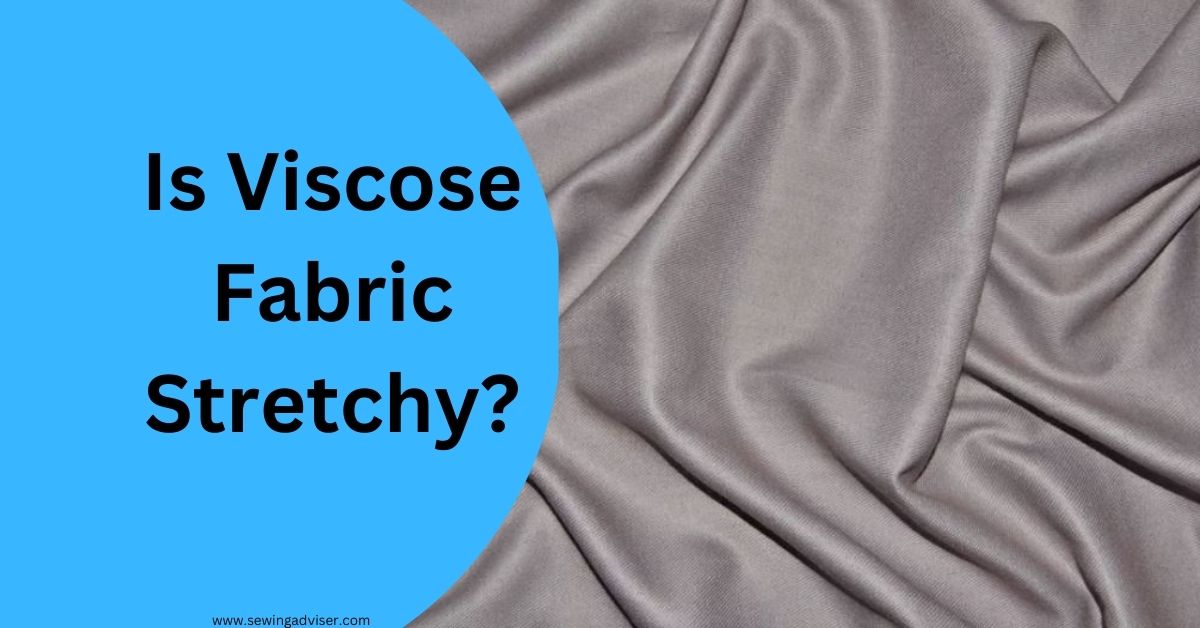
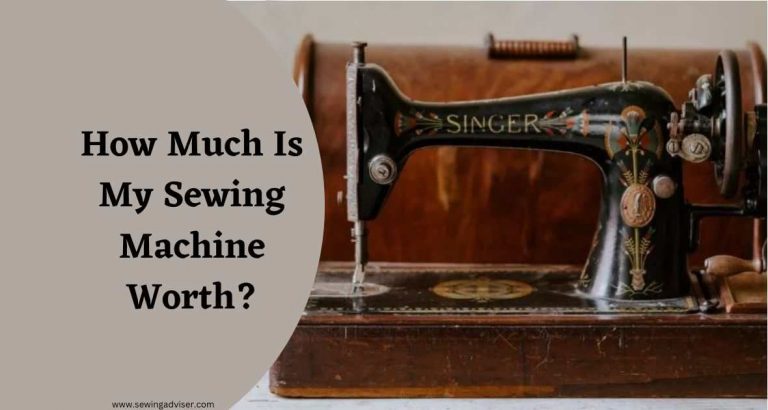


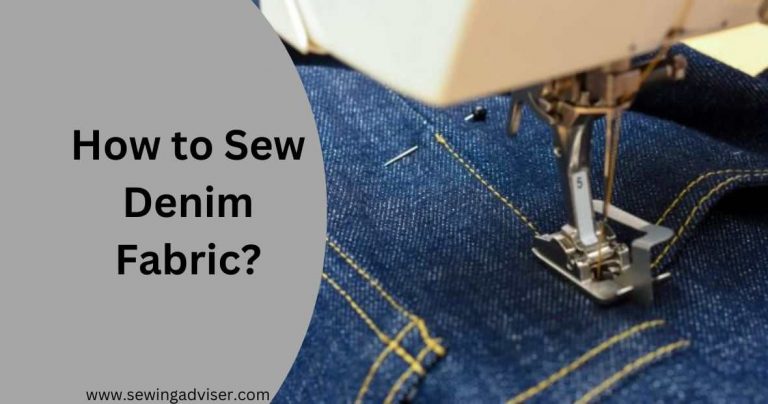

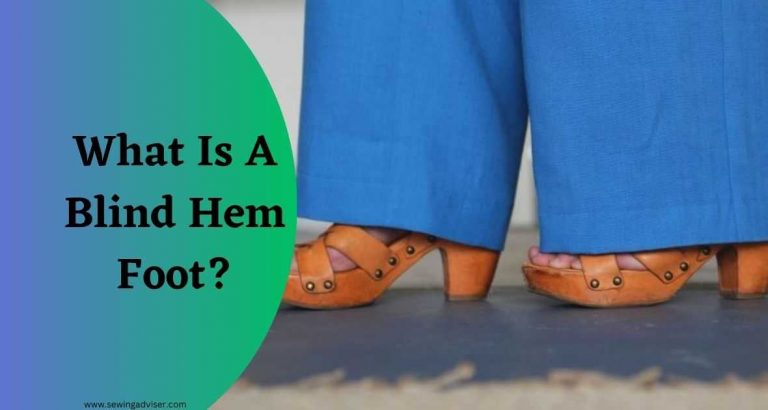
17 Comments